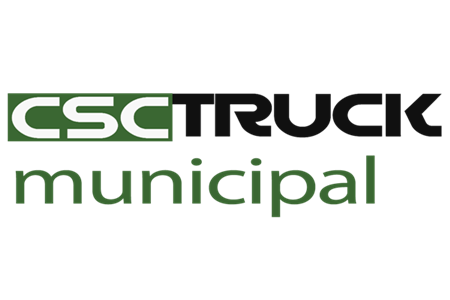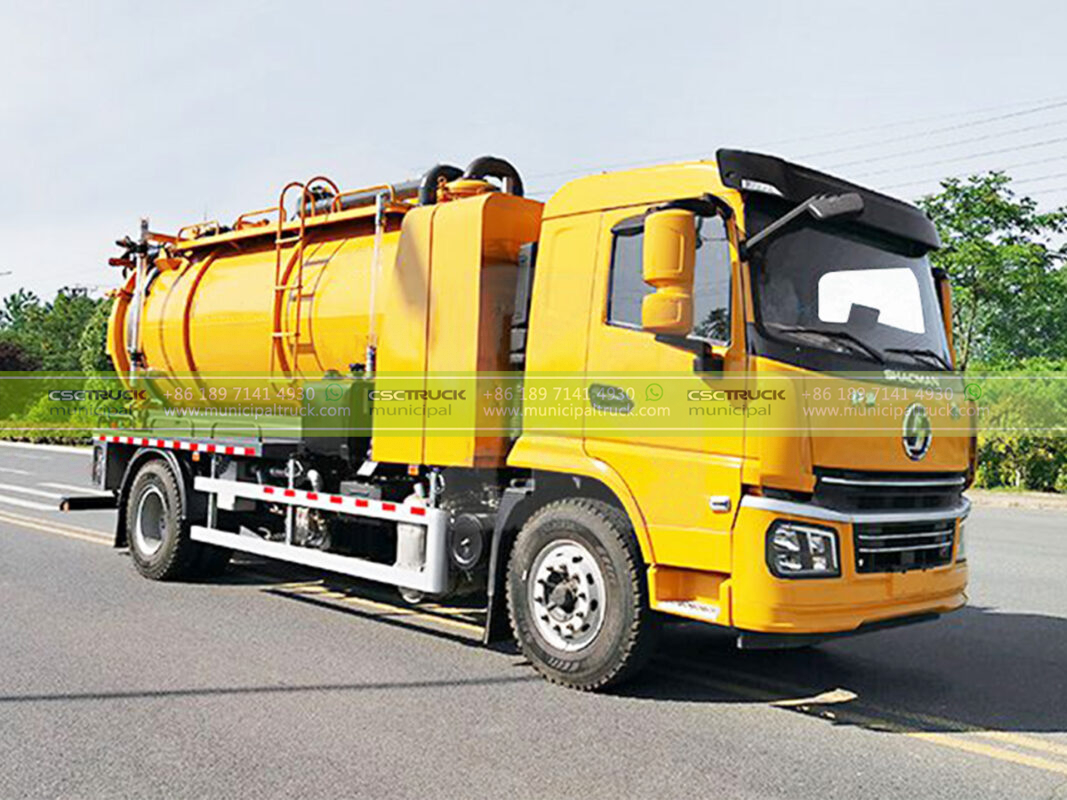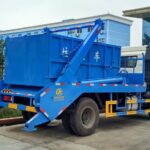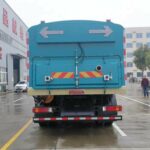Bahrain’s Ministry of Works has commissioned a fleet of 8 combined sweeper jetter trucks to transform maintenance operations along the 3.2km Manama Corniche waterfront precinct, counteracting persistent pollution challenges threatening this nationally significant public space. This $2.3 million strategic deployment—executed through an integrated performance contract between CSCTRUCK Municipal Branch and Bahraini environmental services leader NuSan Solutions—introduces synchronized debris removal and hydrodynamic cleaning technologies targeting the unique coastal degradation patterns compromising the Corniche’s structural integrity and visitor experience.
Part 1: The Corniche’s Maintenance Crisis – Coastal Degradation Meets Urban Demand
As Bahrain’s prime recreational coastline attracting 22,000 daily visitors, the Manama Corniche faces compounding environmental stresses that conventional cleaning methods fail to address.
- Multifaceted Pollution Challenges:
Tidal surges deposit abrasive marine sediments onto pedestrian promenades, while microplastic litter from recreational activities accumulates within drainage channels and decorative tiling joints. Simultaneously, airborne desert dust combines with high-humidity condensation to form concrete-discoloring crusts on seawalls and public art installations. Municipal audits revealed a 40% annual increase in surface deterioration since 2022, with restoration costs exceeding $700,000 due to delayed intervention. - Systemic Gaps in Traditional Approaches:
Legacy sweeper trucks proved incapable of extracting sand from intricate mosaic walkways without damaging cultural heritage elements, while standalone pressure washers merely relocated contaminants into adjacent planting zones. The absence of integrated drainage cleaning allowed organic matter accumulation in subterranean conduits, generating hydrogen sulfide corrosion and malodorous emissions during summer months.
Part 2: Technological Integration – The Sweeper-Jetter Hybrid System
CSCTRUCK’s custom-engineered HD-7M trucks merge three critical sanitation functions within a single chassis, enabling continuous coastal infrastructure preservation cycles.
- Simultaneous Debris Removal and Hydroprocessing:
Front-mounted rotary broom assemblies with variable pressure settings (50-200 PSI) dislodge particulate matter from porous limestone surfaces without erosion, while integrated vacuum systems capture 98% of loosened contaminants through cyclonic filtration. This prevents secondary pollution—a critical improvement over previous methods where 35% of displaced debris entered marine ecosystems. - Subsurface Infrastructure Rehabilitation:
The system’s core innovation lies in its retractable jetting module, deploying 2400 PSI variable-spray lances into stormwater drains and decorative water channels. Dual-phase operation first scours congealed organic deposits from conduit walls, then activates vacuum suction to extract slurry into onboard 15m³ containment tanks. This eliminates manual drain cleaning previously requiring weekly lane closures. - Ecological Safeguards and Resource Efficiency:
Closed-loop water recycling treats and reuses 90% of jetting fluid, reducing freshwater consumption to 300L per operational hour—critical in Bahrain’s water-stressed context. Biodegradable detergent injection neutralizes organic decomposition odors during drainage operations, while GPS-guided speed modulation ensures uniform cleaning intensity across heritage zones like the Pearl Monument precinct.
Part 3: Operational Synergy and Municipal Asset Integration
The deployment framework establishes a 24/7 maintenance regime coordinating specialized vehicles to address surface, subsurface, and atmospheric contaminants holistically.
- Phased Infrastructure Prioritization:
Initial operations concentrate on high-degradation zones: the tidal splash zone near Bahrain Bay’s commercial district, the food-vendor promenade suffering grease accumulation, and the coral-stone terraces surrounding Al Fateh Grand Mosque. Nightly cleaning cycles minimize public disruption, with real-time cleanliness monitoring via IoT sidewalk sensors. - CSCTRUCK-NuSan Performance Partnership:
Under a 4-year $9.1 million comprehensive maintenance contract, CSCTRUCK Municipal Branch provides remote operational analytics through its Riyadh Smart Cities Hub, while NuSan Solutions manages on-ground logistics via its Mina Salman depot. Bahraini technicians received specialized training at CSCTRUCK’s Jeddah Coastal Infrastructure Academy, mastering hybrid system diagnostics. - Multi-Asset Contaminant Management:
While the sweeper-jetter hybrids maintain hardscapes and subsurface networks, auxiliary municipal vehicles complete the environmental control matrix: Compact vacuum trucks extract hazardous particulate matter from seaside air quality stations, and regenerative-air sweeper trucks deep-clean bicycle lanes after weekend events. This orchestrated mechanization replaces six standalone service contracts, projecting 30% operational cost savings while elevating Corniche cleanliness indices to GCC Blue Flag certification standards.
This integrated approach positions Bahrain as a regional pioneer in coastal public space stewardship, transforming reactive maintenance into predictive preservation through synchronized technological deployment and transnational engineering collaboration.







